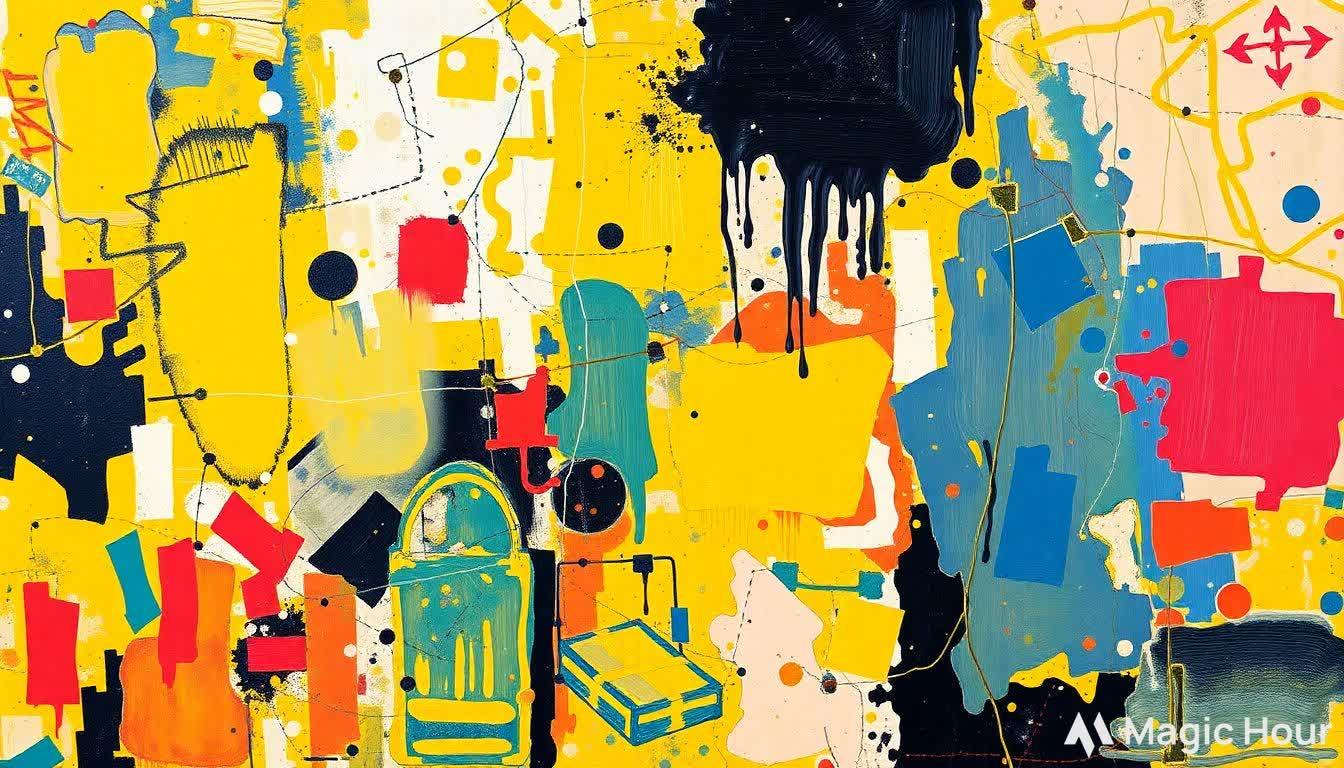Abstract Expressionism, a bold and emotionally charged movement that emerged in post-World War II America, redefined the world of modern art. Rather than depicting literal objects, scenes, or figures, Abstract Expressionist artists prioritized emotion, gesture, and the unconscious over representational accuracy. But what exactly did Abstract Expressionist art look like?
In this article, we’ll break down the distinct characteristics of Abstract Expressionism, explore its most influential artists, and consider how the movement continues to influence contemporary creators.
What Is Abstract Expressionism?
At its core, Abstract Expressionism is not about what you see—it’s about what you feel. The movement began in the late 1940s and reached its peak in the 1950s, largely centered in New York. It was the first American art movement to gain international influence, marking a major shift from European art dominance.
There were two primary schools within the movement:
-
Action Painting – Defined by vigorous brushstrokes, splashes, or drips of paint.
-
Color Field Painting – Emphasized large areas of color and subtle tonal shifts.
Visual Characteristics of Abstract Expressionism
So what did Abstract Expressionist works actually look like? While the styles varied among artists, there are several shared visual traits:
1. Lack of Clear Subject Matter
Abstract Expressionism abandoned traditional subjects. Instead of people or landscapes, viewers are presented with pure abstraction—lines, shapes, colors, and textures.
2. Expressive Brushwork
Whether through thick, visible strokes or dynamic splashes, the technique itself was often the message. Artists like Jackson Pollock famously dripped and flung paint onto canvases laid flat on the ground.
3. Large-Scale Canvases
These works were often monumental in size, designed to surround the viewer and evoke an immersive emotional experience.
4. Emphasis on Color and Form
Color was used intuitively, not to replicate the real world, but to stir the viewer’s subconscious. In color field paintings by artists like Mark Rothko, vast swaths of layered hues evoke introspection and transcendence.
5. Gestural or Spontaneous Composition
Many Abstract Expressionist paintings were made in a spontaneous, sometimes chaotic manner. The movement was deeply influenced by surrealist automatism—the idea of creating art from the subconscious without premeditation.
For a contemporary look at how these expressive traditions are interpreted today, take a moment to view the emotionally resonant and modern abstract works of Sébastien Montel, whose pieces echo the spirit of this era while introducing new dimensions in form and texture.
Key Artists of Abstract Expressionism
Jackson Pollock
Perhaps the most iconic figure, Pollock pioneered the "drip technique," using household paints and unorthodox tools to create dense, web-like compositions.
Willem de Kooning
Known for combining abstraction with figuration, his paintings were energetic, raw, and emotionally intense—often featuring distorted female figures.
Mark Rothko
His large color field paintings are meditative and subtle, using color as a vehicle for existential reflection.
Franz Kline
Kline is celebrated for his stark, black brushstrokes against white canvases, evoking movement and tension.
Helen Frankenthaler
One of the few prominent women in the movement, she developed the “soak-stain” technique that inspired a new generation of color field painters.
How Abstract Expressionism Influenced the Art World
Abstract Expressionism wasn't just a style—it was a revolution. It shifted the center of the art world from Paris to New York and redefined what art could be. It emphasized that process, emotion, and concept could be just as meaningful as representational skill.
The movement also laid the groundwork for later genres like:
-
Minimalism
-
Pop Art
-
Conceptual Art
-
Neo-Expressionism
Today, echoes of Abstract Expressionism can be seen in contemporary abstract and mixed media works—especially in the evolving practices of artists who continue to explore inner landscapes, much like Sébastien Montel, whose visual narratives resonate with the emotive power that defined the era.
Why Abstract Expressionism Still Matters
Even decades later, Abstract Expressionism continues to captivate audiences. Its visual language—rich in emotion, devoid of rules—invites the viewer to participate. These artworks challenge us not to interpret a story, but to experience pure emotion through visual form.
For collectors, artists, and enthusiasts, understanding the visual impact and emotional depth of Abstract Expressionism provides a foundation for appreciating much of the art that followed.
